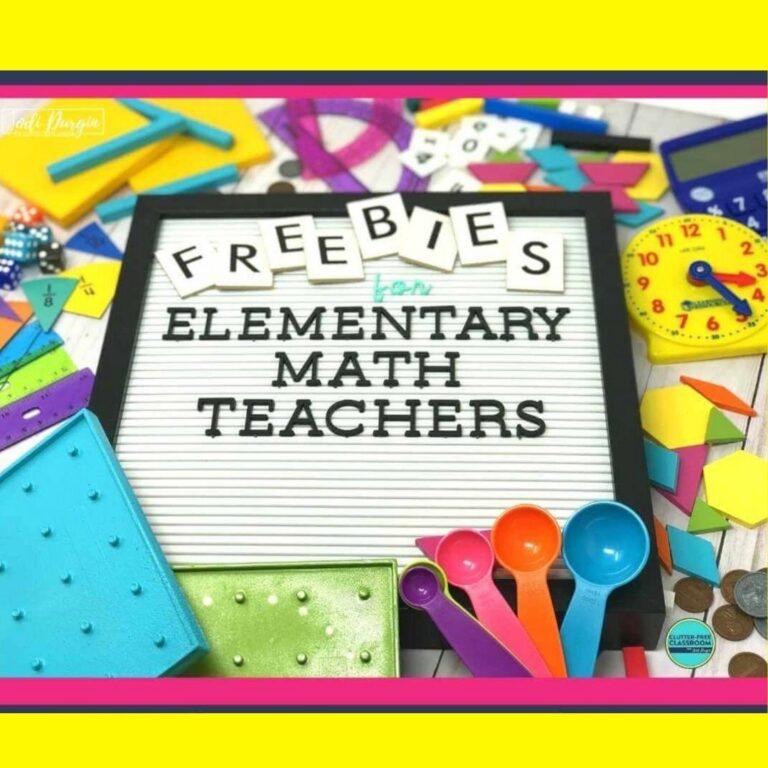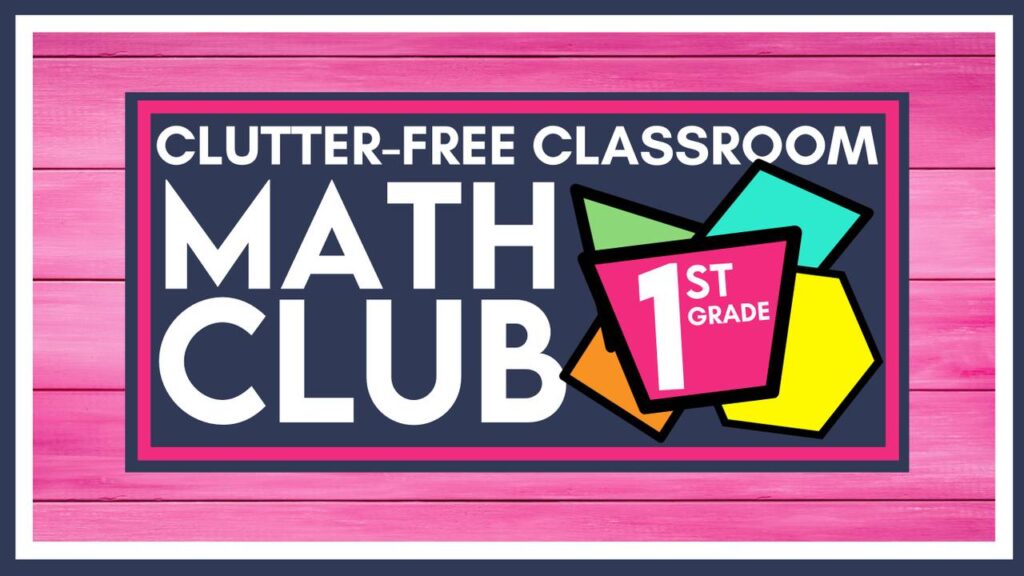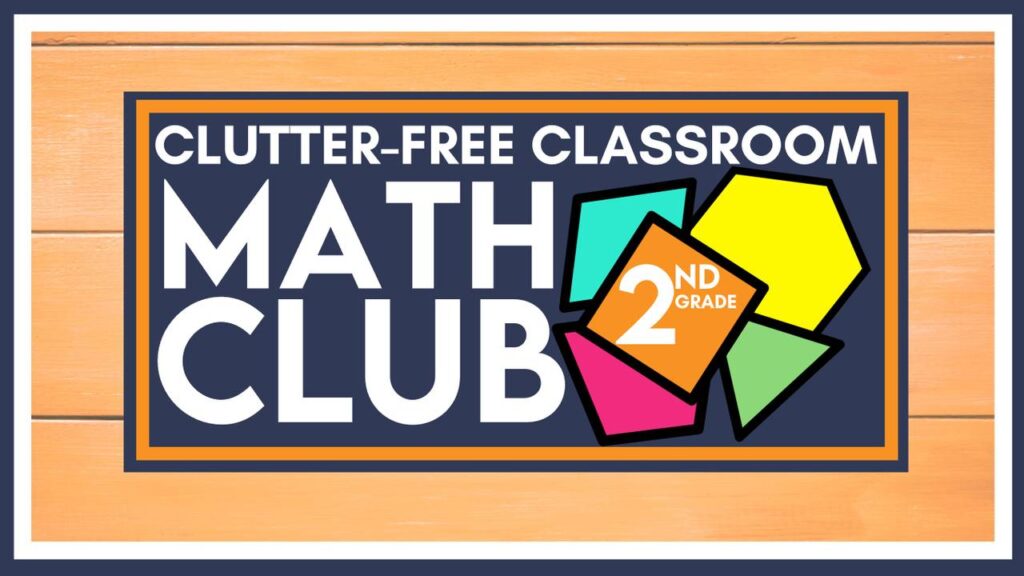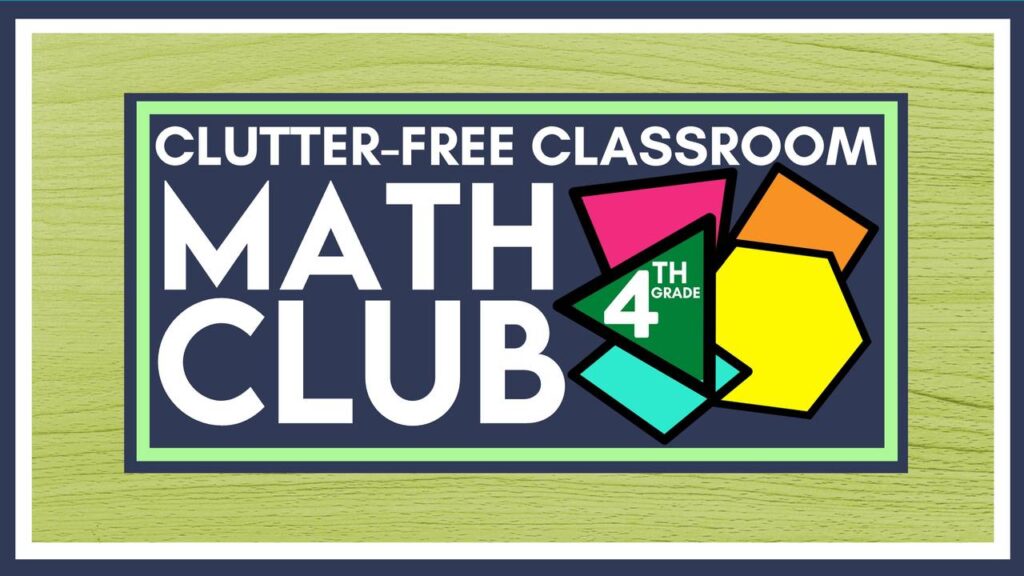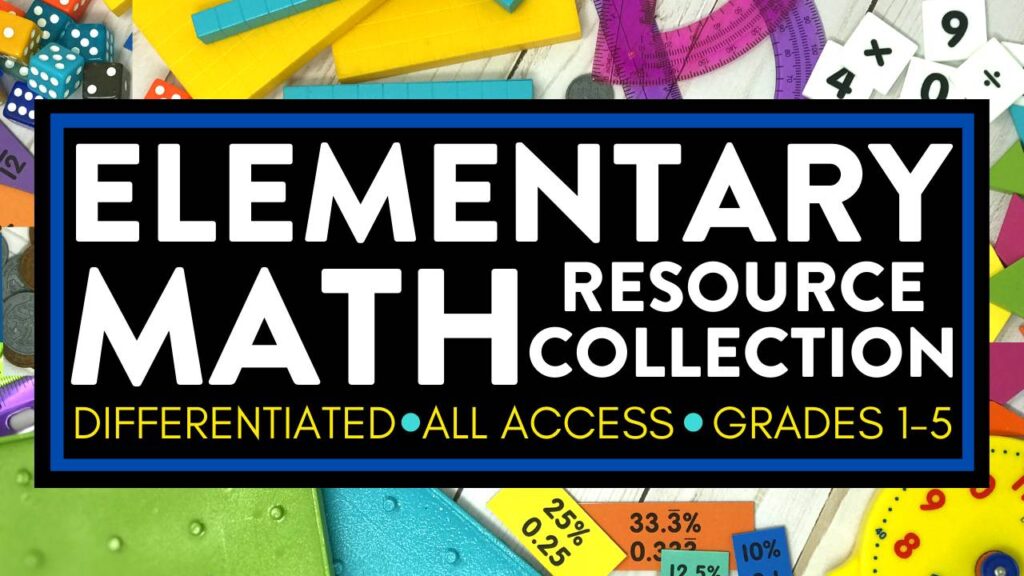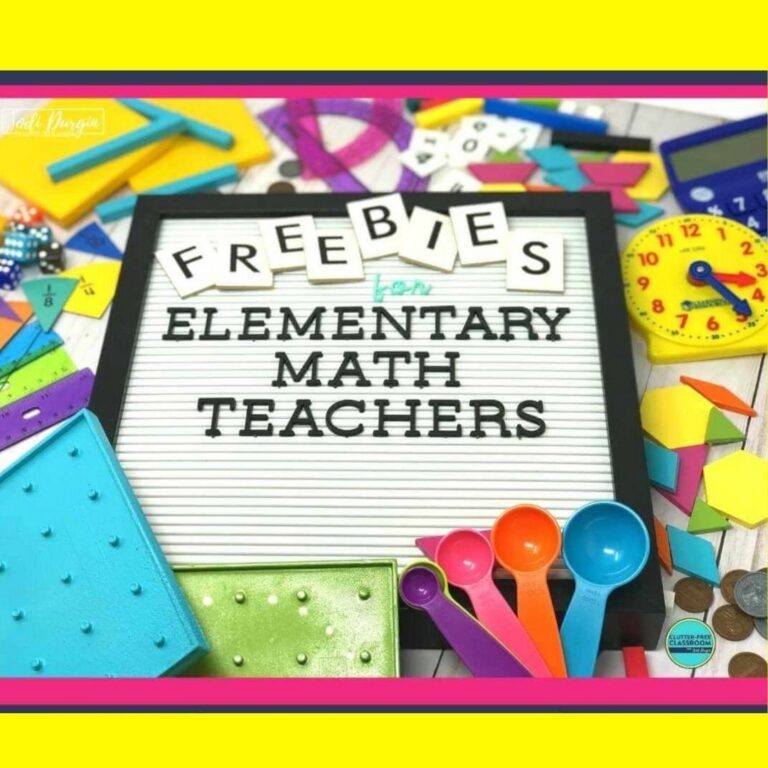If you are an elementary teacher looking for tips and ideas for how to teach fractions, then you found the right place! Learn what fractions are, why it’s important, what your students need to know, and get 5 helpful tips for how to teach them in a fun and engaging way. Read all about how to teach fractions below!
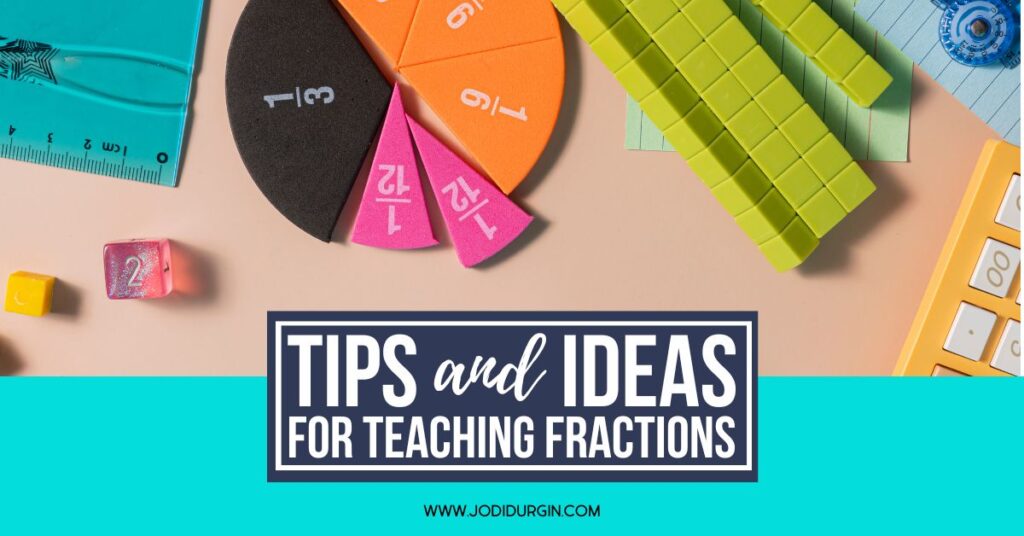
What are Fractions?
A fraction is a number that represents part of a whole. It is vital for students to understand that the shares must be equal in size and that equal shares of identical wholes need not have the same shape.
Why are Fractions Important?
It is important for students to learn fractions because they need a strong conceptual understanding of fractions to explore further mathematical concepts in later grades including calculating decimals and percentages, ratio and proportion, probability and algebraic equations.
What Fraction Skills Do Students Need to Know?
Below are the Common Core and TEKs standards that relate to fractions that define what students should be able to do by the end of the school year. It’s a great starting point for when thinking about how to teach fractions.
Common Core Standards
Below are the CCSS standards related to how to teach fractions.
1st Grade
- Partition circles and rectangles into two and four equal shares, describe the shares using the words halves, fourths, and quarters, and use the phrases half of, fourth of, and quarter of. Describe the whole as two of, or four of the shares. Understand for these examples that decomposing into more equal shares creates smaller shares. (1.G.A.3)
2nd Grade
- Partition circles and rectangles into two, three, or four equal shares, describe the shares using the words halves, thirds, half of, a third of, etc., and describe the whole as two halves, three thirds, four fourths. Recognize that equal shares of identical whole need not have the same shape. (2.G.A.3)
3rd Grade
- Understand a fraction 1/b as the quantity formed by 1 part when a whole is partitioned into b equal parts; understand a fraction a/b as the quantity formed by a parts of size 1/b. (3.NF.A.1)
- Understand a fraction as a number on the number line; represent fractions on a number line diagram. (3.NF.A.2)
- Represent a fraction 1/b on a number line diagram by defining the interval from 0 to 1 as the whole and partitioning it into b equal parts. Recognize that each part has size 1/b and that the endpoint of the part based at 0 locates the number 1/b on the number line. (3.NF.A.2.A)
- Represent a fraction a/b on a number line diagram by marking off a length 1/b from 0. Recognize that the resulting interval has size a/b and that its endpoint locates the number a/b on the number line. (3.NF.A.2.B)
- Explain equivalence of fractions in special cases, and compare fractions by reasoning about their size. (3.NF.A.3)
- Understand two fractions as equivalent (equal) if they are the same size, or the same point on a number line. (3.NF.A.3.A)
- Recognize and generate simple equivalent fractions, e.g., 1/2 = 2/4, 4/6 = 2/3. Explain why the fractions are equivalent. (3.NF.A.3.B)
- Express whole numbers as fractions, and recognize fractions that are equivalent to whole numbers. (3.NF.A.3.C)
- Compare two fractions with the same numerator or the same denominator by reasoning about their size. Recognize that comparisons are valid only when the two fractions refer to the same whole. Record the results of comparisons with the symbols >, =, or <, and justify the conclusions. (3.NF.A.3.D)
- Partition shapes into parts with equal areas. Express the area of each part as a unit fraction of the whole. (3.G.A.2)
4th Grade
- Explain why a fraction a/b is equivalent to a fraction (n × a)/(n × b) by using visual fraction models, with attention to how the number and size of the parts differ even though the two fractions themselves are the same size. Use this principle to recognize and generate equivalent fractions. (4.NF.A.1)
- Compare two fractions with different numerators and different denominators. Recognize that comparisons are valid only when the two fractions refer to the same whole. Record the results of comparisons with symbols >, =, or <, and justify the conclusions. (4.NF.A.2)
- Understand a fraction a/b with a > 1 as a sum of fractions 1/b. (4.NF.B.3)
- Understand addition and subtraction of fractions as joining and separating parts referring to the same whole. (4.NF.B.3.A)
- Decompose a fraction into a sum of fractions with the same denominator in more than one way, recording each decomposition by an equation. Justify decompositions. (4.NF.B.3.B)
- Add and subtract mixed numbers with like denominators. (4.NF.B.3.C)
- Solve word problems involving addition and subtraction of fractions referring to the same whole and having like denominators. (4.NF.B.3.D)
- Apply and extend previous understandings of multiplication to multiply a fraction by a whole number. (4.NF.B.4)
- Understand a fraction a/b as a multiple of 1/b. (4.NF.B.4.A)
- Understand a multiple of a/b as a multiple of 1/b, and use this understanding to multiply a fraction by a whole number. (4.NF.B.4.B)
- Solve word problems involving multiplication of a fraction by a whole number, e.g., by using visual fraction models and equations to represent the problem. (4.NF.B.4.C)
- Express a fraction with denominator 10 as an equivalent fraction with denominator 100, and use this technique to add two fractions with respective denominators 10 and 100. (4.NF.C.5)
- Use decimal notation for fractions with denominators 10 or 100. (4.NF.C.6)
- Make a line plot to display a data set of measurements in fractions of a unit (1/2, 1/4, 1/8). Solve problems involving addition and subtraction of fractions by using information presented in line plots. (4.MD.B.4)
5th Grade
- Add and subtract fractions with unlike denominators (including mixed numbers) by replacing given fractions with equivalent fractions in such a way as to produce an equivalent sum or difference of fractions with like denominators. (5.NF.A.1)
- Solve word problems involving addition and subtraction of fractions referring to the same whole, including cases of unlike denominators. Use benchmark fractions and number sense of fractions to estimate mentally and assess the reasonableness of answers. (5.NF.A.2)
- Interpret a fraction as division of the numerator by the denominator (a/b = a ÷ b). Solve word problems involving division of whole numbers leading to answers in the form of fractions or mixed numbers, e.g., by using visual fraction models or equations to represent the problem. (5.NF.B.3)
- Apply and extend previous understandings of multiplication to multiply a fraction or whole number by a fraction. (5.NF.B.4)
- Interpret the product (a/b) × q as a parts of a partition of q into b equal parts; equivalently, as the result of a sequence of operations a × q ÷ b. (5.NF.B.4.A)
- Find the area of a rectangle with fractional side lengths by tiling it with unit squares of the appropriate unit fraction side lengths, and show that the area is the same as would be found by multiplying the side lengths. Multiply fractional side lengths to find areas of rectangles, and represent fraction products as rectangular areas. (5.NF.B.4.B)
- Explaining why multiplying a given number by a fraction greater than 1 results in a product greater than the given number (recognizing multiplication by whole numbers greater than 1 as a familiar case); explaining why multiplying a given number by a fraction less than 1 results in a product smaller than the given number; and relating the principle of fraction equivalence a/b = (n × a)/(n × b) to the effect of multiplying a/b by 1. (5.NF.B.5.B)
- Solve real world problems involving multiplication of fractions and mixed numbers. (5.NF.B.6)
- Apply and extend previous understandings of division to divide unit fractions by whole numbers and whole numbers by unit fractions. (5.NF.B.7)
- Interpret division of a unit fraction by a non-zero whole number, and compute such quotients. (5.NF.B.7.A)
- Interpret division of a whole number by a unit fraction, and compute such quotients. (5.NF.B.7.B)
- Solve real world problems involving division of unit fractions by non-zero whole numbers and division of whole numbers by unit fractions. (5.NF.B.7.C)
TEKS
Below are the TEKS standards related to how to teach fractions.
1st Grade
- Partition two-dimensional figures into two and four fair shares or equal parts and describe the parts using words; (1.6.G)
- Identify examples and non-examples of halves and fourths. (1.6.H)
2nd Grade
- Explain that the more fractional parts used to make a whole, the smaller the part; and the fewer the fractional parts, the larger the part; (2.3B)
- Use concrete models to count fractional parts beyond one whole using words and recognize how many parts it takes to equal one whole; (2.3C)
- Identify examples and non-examples of halves, fourths, and eighths. (2.3D)
- Partition objects into equal parts and name the parts, including halves, fourths, and eighths, using words (2.3A)
3rd Grade
- Represent fractions greater than zero and less than or equal to one with denominators of 2, 3, 4, 6, and 8 using concrete objects and pictorial models, including strip diagrams and number lines; (3.3A)
- Explain that the unit fraction 1/b represents the quantity formed by one part of a whole that has been partitioned into b equal parts where b is a non-zero whole number; (3.3C)
- Solve problems involving partitioning an object or a set of objects among two or more recipients using pictorial representations of fractions with denominators of 2, 3, 4, 6, and 8; (3.3E)
- Determine the corresponding fraction greater than zero and less than or equal to one with denominators of 2, 3, 4, 6, and 8 given a specified point on a number line; (3.3B)
- Represent fractions of halves, fourths, and eighths as distances from zero on a number line; (3.7A)
- Represent equivalent fractions with denominators of 2, 3, 4, 6, and 8 using a variety of objects and pictorial models, including number lines; revised August 2017 13. (3.3F)
- Explain that two fractions are equivalent if and only if they are both represented by the same point on the number line or represent the same portion of a same size whole for an area model; and (3.3G)
- Compare two fractions having the same numerator or denominator in problems by reasoning about their sizes and justifying the conclusion using symbols, words, objects, and pictorial models. (3.3H)
- Compose and decompose a fraction a/b with a numerator greater than zero and less than or equal to b as a sum of parts 1/b. (3.3D)
4th Grade
- Represent fractions and decimals to the tenths or hundredths as distances from zero on a number line. (4.3.G)
- Represent a fraction 𝑎/𝑏 as a sum of fractions 1/𝑏, where 𝑎 and 𝑏 are whole numbers and 𝑏 > 0, including when 𝑎 > 𝑏; (4.3.A)
- Determine if two given fractions are equivalent using a variety of methods; (4.3.C)
- Compare two fractions with different numerators and different denominators and represent the comparison using the symbols >, =, or <; (4.3.D)
- Evaluate the reasonableness of sums and differences of fractions using benchmark fractions 0, 1/4, 1/2, 3/4, and 1, referring to the same whole; and (4.3.F)
- Decompose a fraction in more than one way into a sum of fractions with the same denominator using concrete and pictorial models and recording results with symbolic representations; (4.3.B)
- Represent and solve addition and subtraction of fractions with equal denominators using objects and pictorial models that build to the number line and properties of operations; (4.3.E)
- Represent fractions and decimals to the tenths or hundredths as distances from zero on a number line. (4.3.G)
- Represent data on a frequency table, dot plot, or stem-and-leaf plot marked with whole numbers and fractions; and (4.9.A)
- Solve one- and two-step problems using data in whole number, decimal, and fraction form in a frequency table, dot plot, or stem-and-leaf plot. (4.9.B)
5th Grade
- Represent and solve addition and subtraction of fractions with unequal denominators referring to the same whole using objects and pictorial models and properties of operations; (5.3.H)
- Represent and solve multiplication of a whole number and a fraction that refers to the same whole using objects and pictorial models, including area models; (5.3.I)
- Divide whole numbers by unit fractions and unit fractions by whole numbers. (5.3.L)
- Represent division of a unit fraction by a whole number and the division of a whole number by a unit fraction such as 1/3 ÷ 7 and 7 ÷ 1/3 using objects and pictorial models, including area models; (5.3.J)
5 Tips for How to Teach Fractions
Below are 5 helpful tips for how to teach fractions to elementary students.
1. Read Aloud Picture Books that Teach Fractions
Reading aloud picture books is a great way to integrate literacy into your math block and present information in a different way. Our favorite picture books for teaching fractions are A Fraction’s Goal: Parts of a Whole by Brian B. Cleary, Fraction Fun by David A. Adler and Full House: An Invitation to Fractions by Dayle Ann Dodds. Check out the full list of math picture books we recommend!
2. Offer Hands On Learning Experiences
Hands-on math experiences help students make connections, remember their learning, and develop a deep conceptual understanding of the content. You can make any lesson interactive and engaging by offering math manipulatives. Our favorite math manipulatives for teaching fractions are fraction bars, fractions tiles, linking cubes, fraction squares, fraction circles and unifix cubes.
3. Explicitly Teach Related Math Vocabulary
Teaching math vocabulary is essential for all students, but it is especially beneficial for students who speak English as a second language and students with learning differences. Key vocabulary terms for fractions are partition, circle, rectangle, equal, whole, part, two-dimensional figure, fraction, equal shares, equal parts, halves, fourths, quarters, half of, fourth of, quarter of, thirds, unit fraction, numerator, denominator, equivalence, equivalent fraction, compare, greater than, >, less than, <, =, sixths, eighths, number line, plot, bar model, interval, set, visual fraction model and area.
4. Give Students Opportunities to Apply Fractions to the Real World
Learning becomes more meaningful when students understand how it connects to the real world. Students are more engaged and invested in their learning. Some examples of ways we use fractions in the real world are when partitioning our food into equal shares, expressing time, sharing progress, creating recipes and when shopping. Project based learning and word problems are examples of opportunities for students to apply their learning to real world situations.
5. Encourage Parent Involvement
Parent participation in math is essential because it impacts students’ attitude toward math, proficiency levels this school year, and future success in their math education. Be sure to keep communication open with families and share ways they can support their children in their math learning. Some examples of ways they can practice fractions at home are when cutting a sandwich parents or guardians can ask their child if they want it cut into halves or fourths or they can make a pizza together and ask questions such as, “How much of the pizza has sauce?”, “What fraction of the pizza should we put pepperonis on?” or “If we partition the pizza into 8 slices, what fraction represents 3 of the pieces?”.
In closing, we hope you found this information about how to teach fractions helpful!

